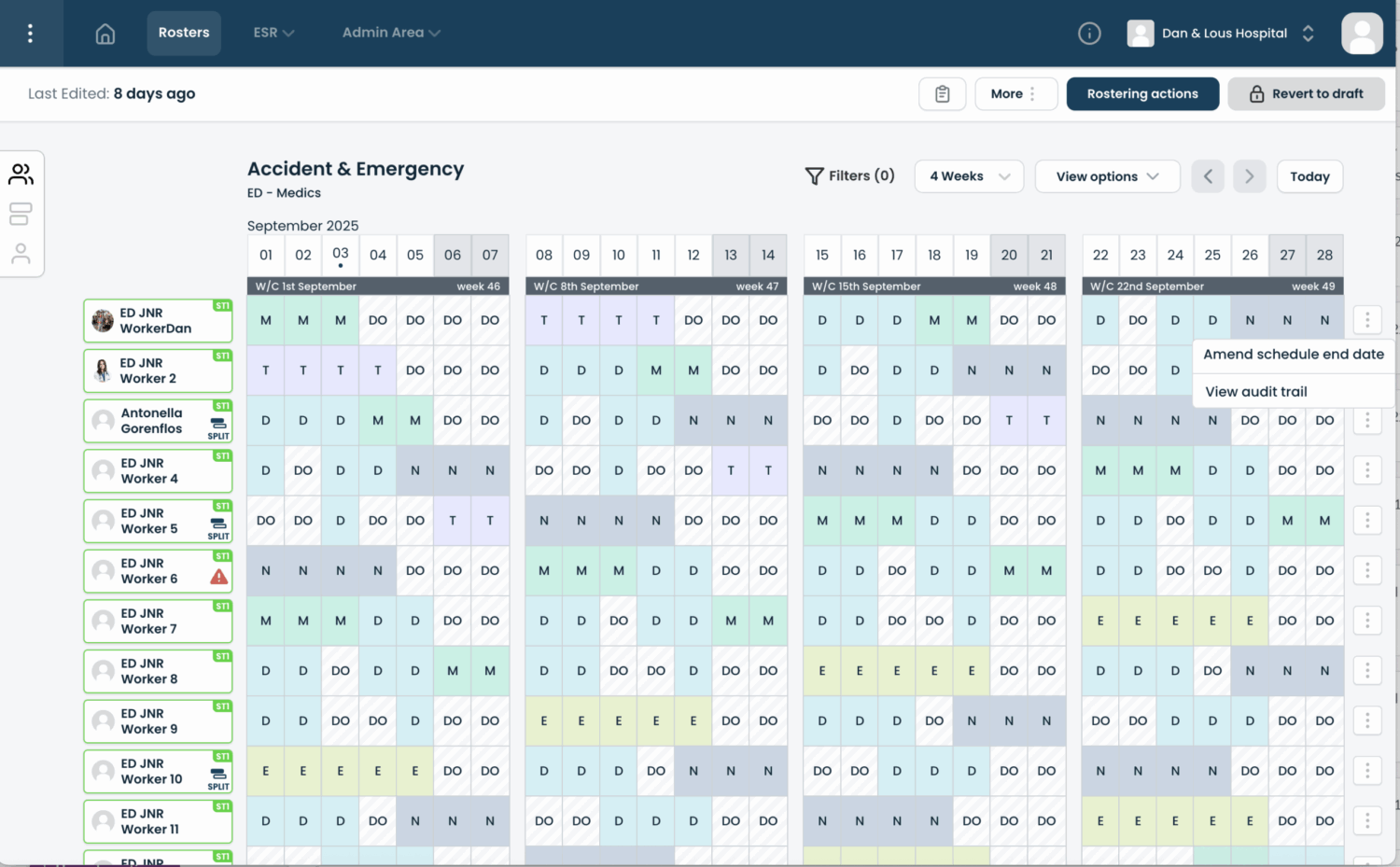Rolling rosters: a smarter way to schedule

Most roster systems force you to choose a start date, an end date and then hope nothing changes. Some take that a step further and lock you into clean 4-week boxes. Neat on paper, but impossible in practice.
At Patchwork we built our rostering system differently: rolling, agile and human-centric. That means managers publish what they can when they can, keep future blocks in draft, and make targeted edits without rebuilding the whole year.
This results in predictability where it matters, and flexibility where reality bites.
The problem with inflexible scheduling
Traditional rostering systems often create more problems than they solve:
Fragmented records
A single, real-life roster gets scattered across multiple digital versions, making it difficult to review past activity or conduct audits.
Messy reporting
Data has to be manually pieced together from various rosters, which complicates analysis and compromises accuracy (and takes ages).
Un-productivity
Managers find themselves spending more time on roster maintenance than on managing their teams and services.
Some organisations try to work around these limitations by creating long-term rosters that span 12 or even 24 months. While this might seem like a solution, it isn’t sustainable.
Different teams and roles operate on vastly different cycles. For instance, resident doctors might rotate every few months, while annual job plans are set for the year. A one-size-fits-all approach simply doesn’t work and clinician and non-clinical staff bear the brunt of this.
Introducing rolling rosters: The Patchwork solution
Here’s how we’re making rostering smarter and more intuitive:
No need to recreate
Instead of starting from scratch every few months, you can simply extend your existing roster. This creates a continuous, unbroken record of all scheduling activity. We’ve even attached a short walkthrough, so you can see this in action for yourself.

Publish in increments for clearer planning
Managers can release the roster in blocks. This gives staff the predictability they need, while managers retain the flexibility to adapt to future changes.
Seamlessly manage staff patterns and rotations
Whether it’s accommodating rotations, promotions, or new team members, patterns can be easily extended, edited, or ended within the same roster. Crucially, managers can also swap workers safely in and out of schedules when rotations happen, without breaking continuity or creating a new roster. That means less repetitive work, fewer errors, and a smoother process for everyone. Take a look here at how this works on Patchwork Rota.
Align service and job plans
Managing rosters will soon allow shifts and activities from service and job plans to be added at any time, even after a roster has been extended. There’s no need to overhaul your workflow, just extend, adjust, and keep rolling.

Why a flexible approach matters
By moving away from rigid, start-and-end-date rosters, we empower healthcare organisations to:
- Reduce the administrative burden on managers.
- Crucially, improve the accuracy of reports and forecasts.
- Provide staff with clarity while maintaining operational flexibility.
- Strengthen retention by creating a more efficient work environment that is more considerate to the clinicians’ work.
With Patchwork, rosters move with you, they are agile and fluid, supporting continuous service delivery.